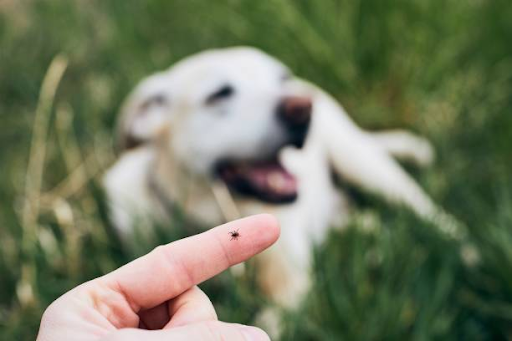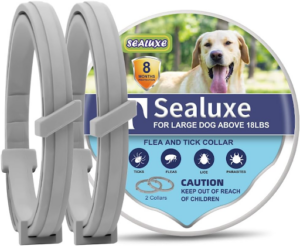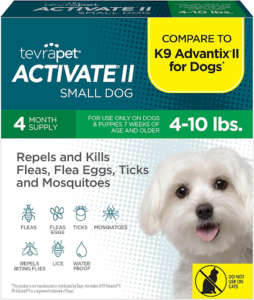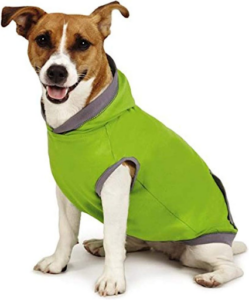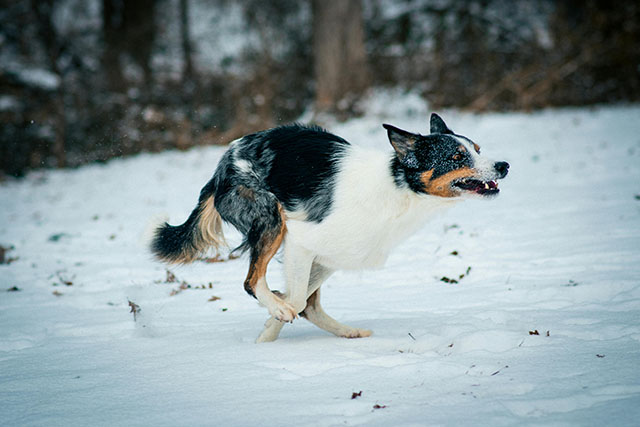Ticks might be tiny, but they sure pack a punch when causing trouble for our beloved dogs. These blood-sucking parasites not only make our furry friends uncomfortable but can also transmit various diseases. To ensure your dog’s well-being, it’s crucial to have a tick prevention and removal plan in place.
This blog post will cover all the important facts about ticks while highlighting essential strategies for preventing or removing them before any harm is done. Not only will you understand exactly what kind of risks infected ticks pose to our canine companions, but also empowering tips for summertime tick safety — so seize the opportunity today!
How Can I Prevent My Dog from Getting Ticks?
Regularly Inspect Your Dog
One of the easiest and most effective ways to prevent ticks is through regular inspection. Check your dog’s fur, especially after outdoor adventures in wooded or grassy areas. Run your fingers through their coat, paying close attention to ears, paws, and the neck area.
Tick-Repelling Collars
Tick-repelling collars have become a popular and convenient method for preventing ticks. These collars release chemicals that discourage ticks from latching onto your dog. It is important to select a collar that suits your dog’s size and weight and replace it as instructed on the packaging.
Try SEALUXE for 24/7 pest protection. With each collar providing 8 months of continuous flea and tick prevention, your furry friend will be safeguarded year-round. Rest assured, this collar is pet-safe and poses no harm to humans. It offers a soft and adjustable design, ensuring your dog’s comfort without compromising protection. Plus, the one-size-fits-all feature accommodates dogs of every size.
No need to worry about water exposure either, as this collar is water-resistant. Even if your playful pup decides to take a stroll in the rain, the collar’s effectiveness will remain intact.
Topical Tick Preventatives
Topical treatments, like spot-on solutions, are directly applied to your dog’s skin, offering long-lasting protection against ticks, fleas, and sometimes even mosquitoes.
Give Activate II a try. It comes in a pack of 4 and is suitable for small dogs weighing 4-10 lbs. These topical drops provide a 4-month flea treatment. Activate II is not only approved by veterinarians but also effectively repels and kills fleas and ticks on contact, safeguarding your dog from potential bites and flea-borne illnesses.
Tick-Resistant Clothing
If your dog enjoys exploring dense vegetation, consider dressing them in tick-resistant clothing. These specially designed garments serve as an additional physical barrier against ticks, making them particularly valuable for dogs in areas prone to ticks.
For example, the Insect Shield is an insect-repellant lightweight hoodie available in green that offers superb protection. Treated with Insect Shield, an invisible and odorless insect-repellent technology, this hoodie effectively safeguards against ticks, mosquitoes, and other biting insects. Moreover, its hood provides added defense against irritating and dangerous pests.
Vaccination
Some regions have vaccines available that can help protect dogs against specific tick-borne diseases, like Lyme disease. Consult your veterinarian to determine if vaccination suits your dog based on their risk factors.
Natural Tick Deterrents
Certain can be effective in repelling ticks. One example is cedar oil sprays or shampoos, which deter ticks and other pests. While they may not provide complete protection, incorporating them into your tick-prevention strategies can be valuable.
Give Natural Care Flea and Tick Dog Shampoo a try. It’s a certified natural product that kills harmful fleas, flea larvae, and ticks upon contact. Its new extra-strength formula utilizes natural plant extracts to effectively eliminate fleas and ticks. This shampoo lathers quickly and rinses easily. Furthermore, it contains no harsh chemicals, is alcohol-free, and paraben-free. Safe for dogs 12 weeks and older, it’s proudly made in the USA.
Maintain a Tidy Yard
Ticks often lurk in tall grass and shrubs. Regularly mow your lawn and keep your yard clean to reduce tick habitats. To minimize tick migration, consider creating a gravel or mulch border between wooded areas and your lawn.
What is the Most Effective Tick Prevention for Dogs?
The most effective tick prevention for dogs often involves a combination of methods tailored to your pet’s needs and your environment. Here are some additional tips to maximize tick prevention:
- Consult Your Veterinarian: Your veterinarian is your best resource for tick prevention advice. Preventive medication, regular flea and tick checks, and other tips can help protect your dog from ticks. They can recommend products and strategies based on your dog’s age, health, and lifestyle. Be sure to keep up with regular check-ups to stay ahead of any potential tick-related issues.
- Year-Round Protection: Ticks can be active even in cooler months, so don’t limit tick prevention to just the warm seasons. Maintaining year-round protection ensures your dog remains safe throughout the year.
- Tick Removal Tools: Invest in high-quality tick removal tools, such as fine-tipped tweezers or removers. This will make the removal process easier and less likely to leave behind tick mouthparts.
- Educate Yourself: Learn about the tick species in your area and the diseases they carry. Knowing what to look for and which prevention methods are most effective can make a significant difference.
How Do You Remove Ticks?
Despite our best efforts, dogs can still pick up ticks. When you spot a tick on your furry friend, removing it promptly and correctly is essential to minimize the risk of disease transmission. Here’s a step-by-step guide:
1. Gather Your Tools
- Fine-tipped tweezers or a tick removal tool.
- Gloves to protect your hands.
2. Prepare Your Dog
Calm your dog and position them in a well-lit area. Have a helper on hand if needed.
3. Grasp the Tick
Using your tweezers or tick removal tool, grasp the tick as close to the skin’s surface as possible. Be gentle to avoid crushing the tick.
4. Steady, Even Pressure
With a steady hand, apply even pressure and pull the tick straight upward. Do not twist or jerk, as this may cause the tick’s mouthparts to break off and remain embedded.
5. Dispose of the Tick
Place the tick in a sealed container or zip-lock bag. This can be helpful if you later need to identify the tick species or monitor your dog’s health.
6. Clean the Area
Clean the bite area with antiseptic to prevent infection.
7. Wash Your Hands
Wash your hands thoroughly after handling the tick and any tick-infested items.
8. Monitor Your Dog
Keep an eye on your dog for any signs of illness or changes in behavior. If you notice anything unusual, consult your veterinarian.
Why Do We Control Ticks?
Controlling ticks is not just about protecting our dogs; it’s also crucial for human health and the ecosystem. Here’s why tick control matters:
Preventing Tick-Borne Diseases:
Ticks can transmit a variety of diseases to both dogs and humans. These diseases, such as Lyme disease and Rocky Mountain spotted fever, can have severe health consequences. By controlling ticks, we reduce the risk of these diseases.
Protecting Ecosystem Balance:
Ticks play a role in the ecosystem by serving as a food source for certain wildlife, including birds and reptiles. However, unchecked tick populations can harm these animals. Effective tick control helps maintain a balanced ecosystem.
Enhancing Outdoor Enjoyment:
Ticks can make outdoor activities less enjoyable and potentially risky. Controlling ticks allows us to enjoy nature without worrying about tick bites.
Preserving Canine Well-Being:
Our beloved furry companions rely on us for their overall well-being and contentment. Safeguarding them against tick infestations is crucial to ensure their longevity and vitality. If you want to explore natural remedies, check out this informative video.:
Keeping Your Dog Tick-Free and Healthy
Preventing and removing ticks from your dog requires diligence, education, and a combination of strategies. Regularly inspecting your dog, using tick-repelling products, and knowing how to safely remove ticks are essential steps in tick control.
Consult your veterinarian is crucial for creating a personalized tick prevention plan that suits your dog’s needs. By taking these measures, you’ll keep your furry friend tick-free and ensure they enjoy a happy and healthy life in the great outdoors.
Jessica is a veterinary medicine student who is passionate about animals. Living with her cherished dog, Milo, deepens her understanding of the human-animal connection, enhancing her empathy as a future veterinarian.
Jessica’s concise articles reflect her dedication to improving the lives of animals and those who care for them, making her an inspiring figure in the pet care field.

